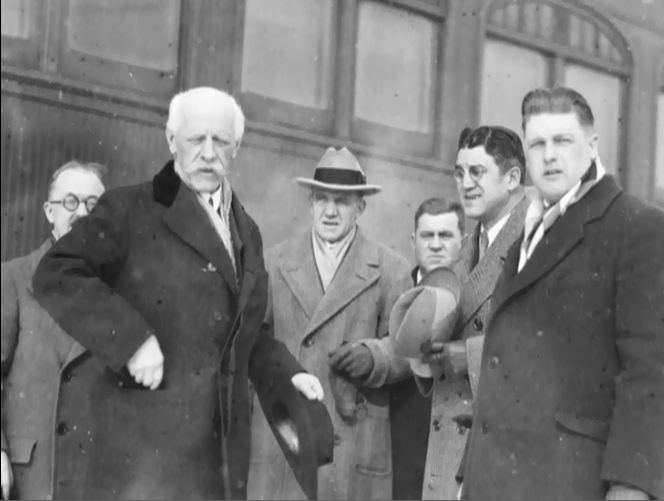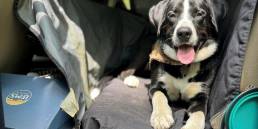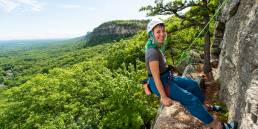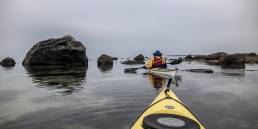New Hampshire has long been at the forefront of skiing in the US. The state is home to the country’s first organized downhill ski race (on Mount Moosilauke), its first gondola (at Wildcat), and a staggering number of trails cut by the Civilian Conservation Corps (CCC) that have become legendary resorts like Cannon, Wildcat, and Waterville. Hidden deep in the New Hampshire’s northernmost county, Coos, far above the state’s popular ski resorts, and lost among the numerous historical firsts is the state’s oldest and longest-running contribution to the sport of skiing: the Nansen Ski Club.
Founded in Berlin, New Hampshire, in either 1872 or 1882 (sources differ on the date of the club’s origin), the Nansen Ski Club was one of the earliest ski clubs in the US and is the country’s oldest continually operating ski club. While the club’s original purpose was to facilitate enjoyment of the sport—through trail maintenance and the construction of a warming hut—little did they know their efforts would lead to Berlin becoming the cradle of ski jumping in the US, put the small city on the minds of Olympic hopefuls, and still be attracting nordic skiers nearly 150 years later.

The Ski Klubben Club
Scandinavian immigrants brought skiing to Berlin, NH, and founded the Nansen Ski Club shortly thereafter. Arriving in Berlin in the 1840s and 1850s to help build the Atlantic and St. Lawrence Railroad, the immigrants settled in the area (in part due to its hospitable winter climate), finding more permanent work in logging and the city’s mills. By the early 1870s, 30 families had established themselves in Berlin’s Norway Village, an area of four streets—Norway, Denmark, Sweden, and Finland. Much like the Nansen Ski Club, those streets are still around today.
During this period, the group founded the Ski Klubben in the upstairs hall of the old Berlin Mills Company Store. The club’s original intent was to foster the sport of nordic skiing and maintain a sense of pride in their home countries. Initially, membership was restricted to male residents of Norway Village, but soon after expanded to “allow any young man of good character.” The membership expansion is one of many changes over the years, most notably the club’s name. It evolved from the Ski Klubben to the Berlin Mills Ski Club to the Fridtjof Nansen Ski Club, before finally settling on the Nansen Ski Club.
The club’s namesake was Dr. Fridtjof Nansen, a famous Norwegian explorer who used cross-country skis to become the first person to traverse the Greenland Icecap. A hero to the club’s early members, Nansen would later be awarded a Nobel Prize for his aid to displaced victims of World War I. Nansen would also go onto visit his namesake club in 1929; when he arrived in Berlin, the whole city welcomed him with a parade.

The Building of “Big Nansen”
In addition to the nordic focus, club members have been building jumps in Norway Village since the club’s inception. An early jump (built in 1906) was in Paine’s Meadow, where Berlin’s Eleventh Street runs today. Jumps like this one were made by building a chute into the hill and it’s said that the Nansens attained speeds of up to 60 miles per hour before they launched into the air. In 1921, the Nansens constructed their first proper ski jump—it was 65 feet high and featured a 170-foot runout. Just six years later, in 1927, the jump was enlarged.
In the 1930s, Nansen members constructed a world-class ski jump just north of Berlin in the small town of Milan. Using the legendary ski jumps of Europe as a model, the Nansens, along with the City of Berlin and the National Youth Administration (a New Deal program providing work and education for Americans aged 16 to 25), built the highest ski jump in the US. Fondly called “Big Nansen,” the jump towered 171 feet above the ground with a descent angle of roughly 37.5 degrees and a 312-foot runout.
For approximately 50 years, Big Nansen was the foremost ski jump in the country. Shortly after its completion in 1938, the first Olympic trials were held there, with 25,000 spectators—more than double the Berlin’s current population—watching jumpers launch off Big Nansen. The jump went on to host the United States Ski Jumping National Championships in 1940, 1957, 1965, and 1972.
A host of factors led to the decline of Big Nansen—an accident in the 1970s that paralyzed a skier put a dark veil over the jump, while the volunteers responsible for the events aged. Additionally, professional skiers were seeking more modern jumps. In 1985, the last skier flew from Big Nansen and the jump officially closed in 1988, falling into disrepair thereafter. Big Nansen has since been designated a National Historic Site and efforts to restore it, revitalize youth ski jumping in the area, and host competitions are underway. These initiatives got a big boost when Olympian (and Red Bull athlete) Sarah Hendrickson flew from Big Nansen.

Ski it for Yourself
Part of New Hampshire’s State Parks, you can visit the jump today. As work continues, the Nansens’ Nordic heritage is still going strong, with over 300km of groomed cross-country ski trails in Milan. The foundational Nansen trails were built by John Morton, a two-time Olympian cross-country biathlon skier and professional trail designer.
The Nansen trail system accommodates skiers of all abilities and allows animals (provided they’re leashed and under control). The trails are groomed by volunteers and a warming hut is available to members anytime (non-members are welcome to visit the hut when a volunteer hut host is onsite—which includes most winter weekends).
The Nansen cross-country ski trails are located a short drive from Gorham and about 30 minutes north of Pinkham Notch on Route 16. Club members have access to the club’s “Ski & Snowshoe Equipment Locker” which includes the free use of skis, poles, boots, and snowshoes. If you don’t have your own gear and you’re traveling from the south, there are numerous places to rent Nordic gear on the way, including Eastern Mountain Sports’ North Conway store. Go visit!
Tim Peck and Doug Martland
Tim and Doug met long ago at the Eastern Mountain Sports in Canton, Massachusetts. Bonding over a love of slick Quincy Quarry granite, White Mountain sufferfests, and scheming up adventures while folding tee-shirts, today Tim and Doug collaborate to write about their favorite outdoor activities and occasionally get nostalgic about tee-shirt tables.
Related Posts
April 24, 2024
What to Bring When Road Tripping with Your Dog
Prepare for the ultimate road trip with…




